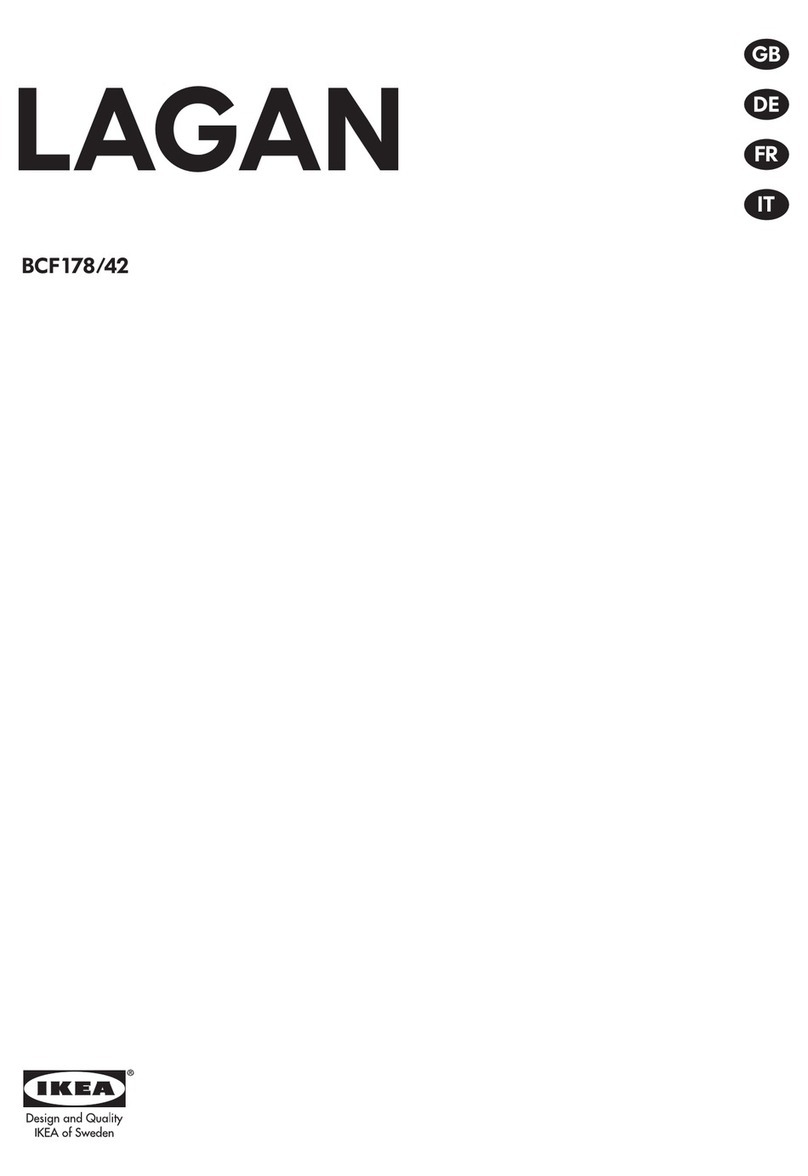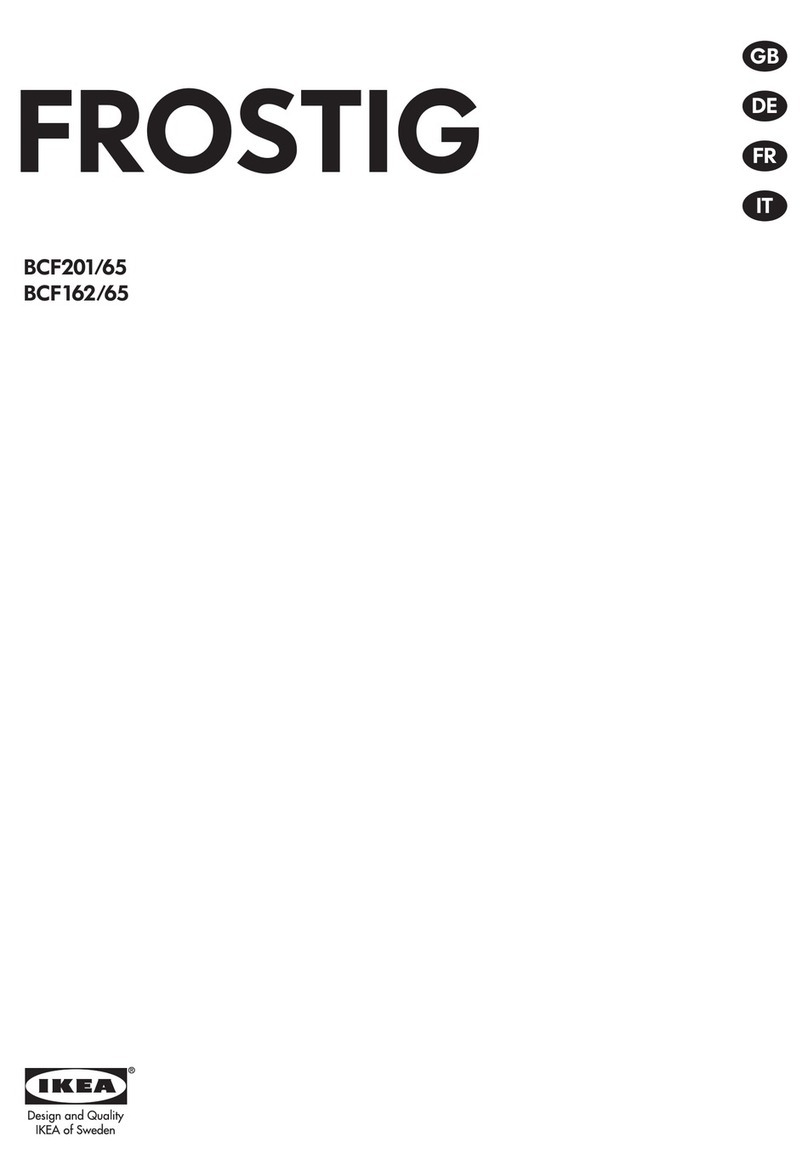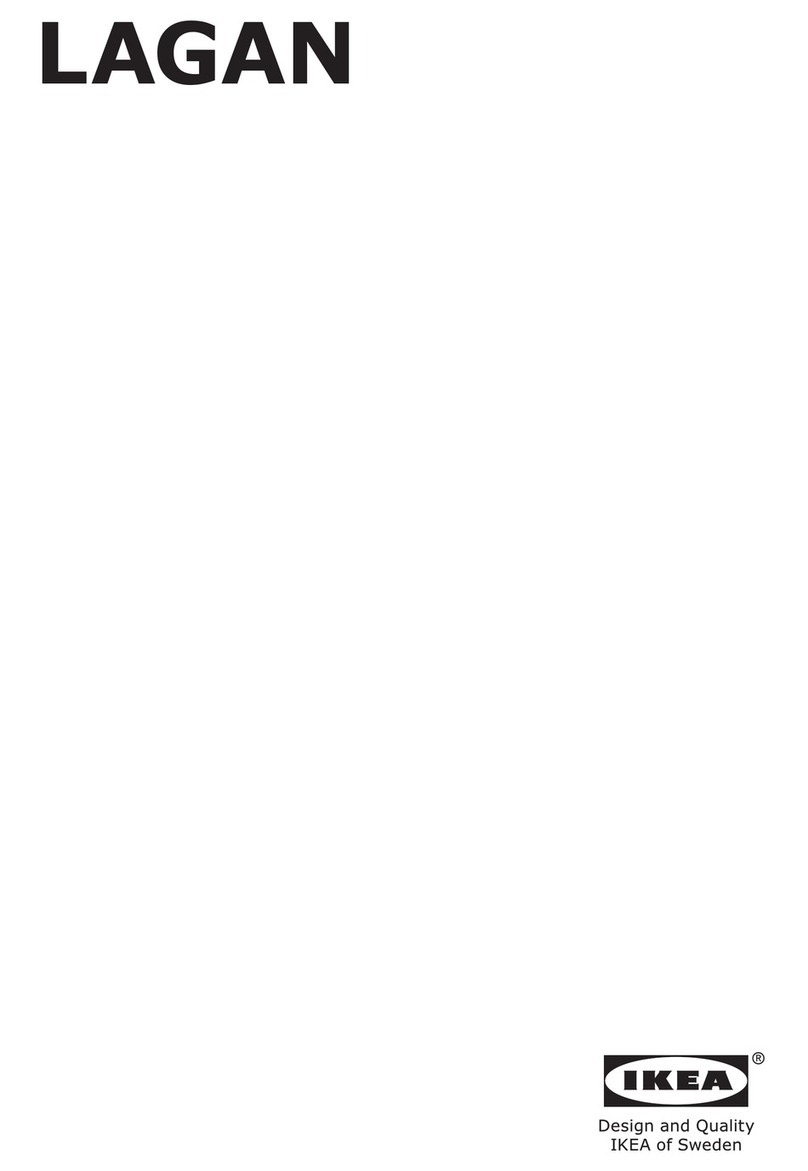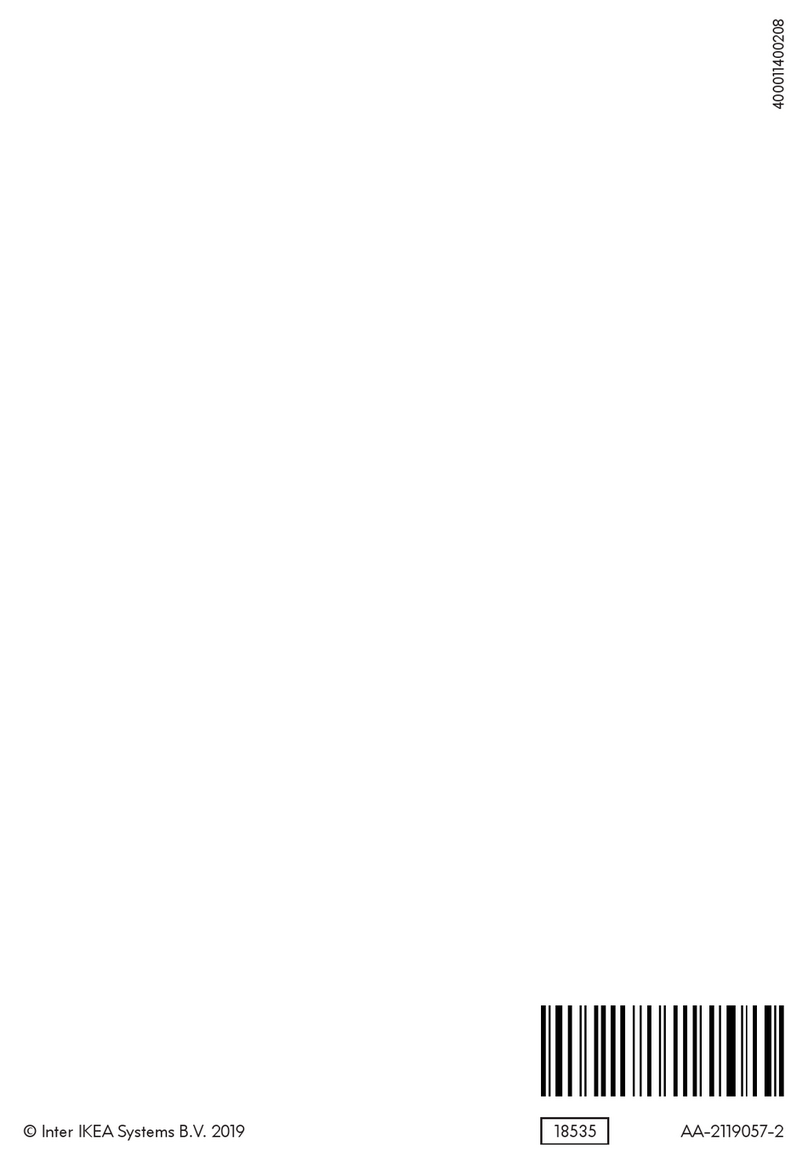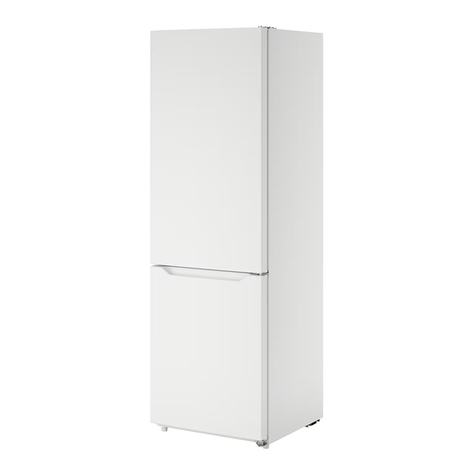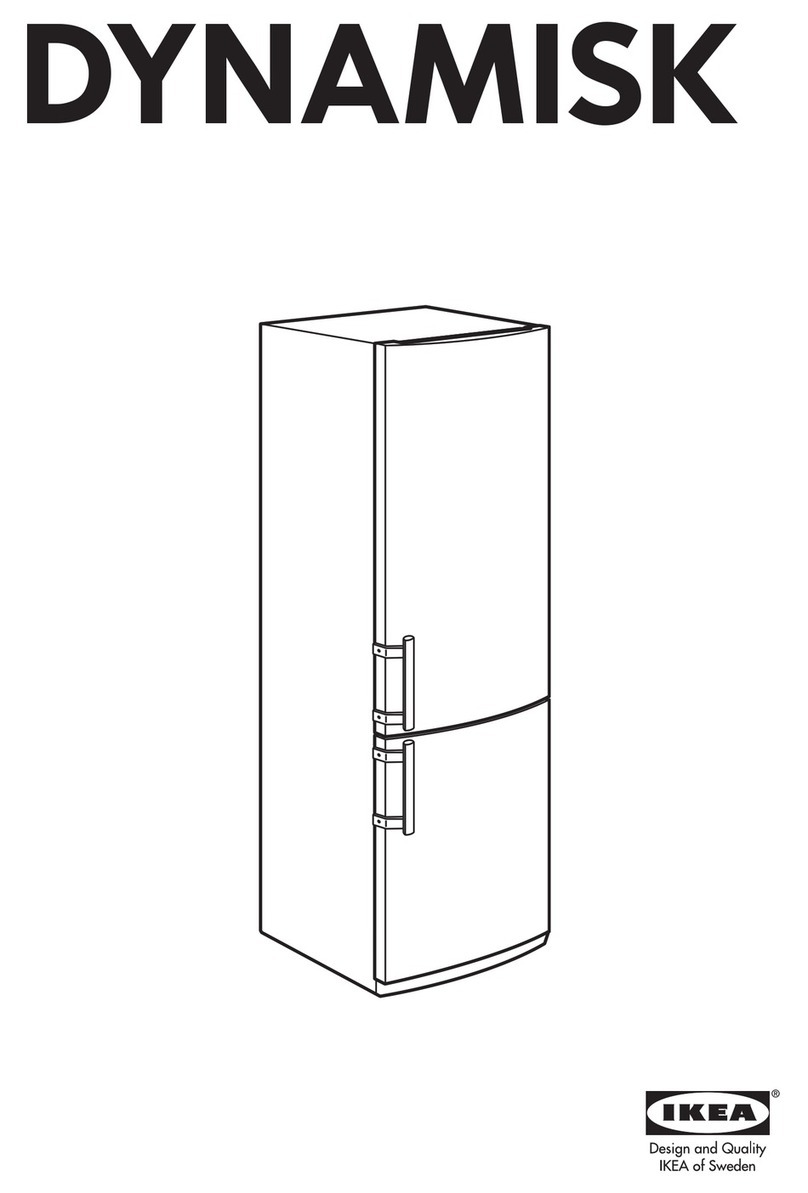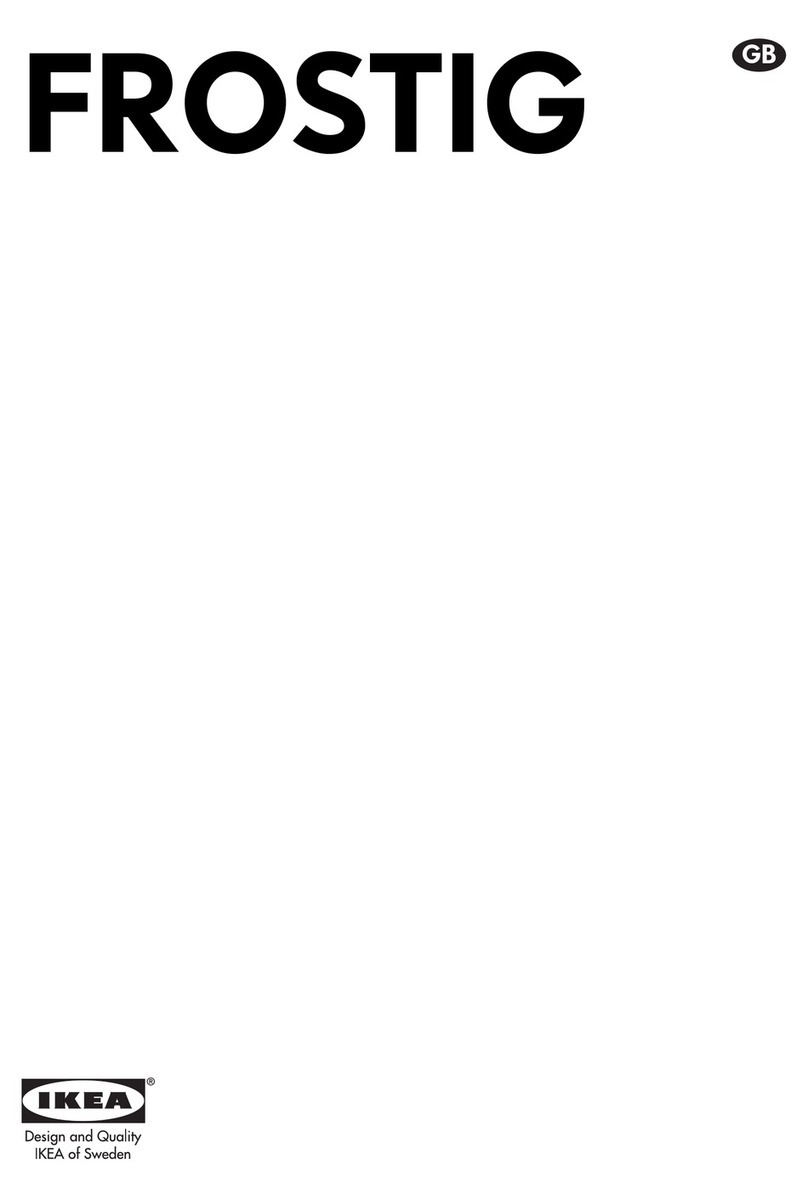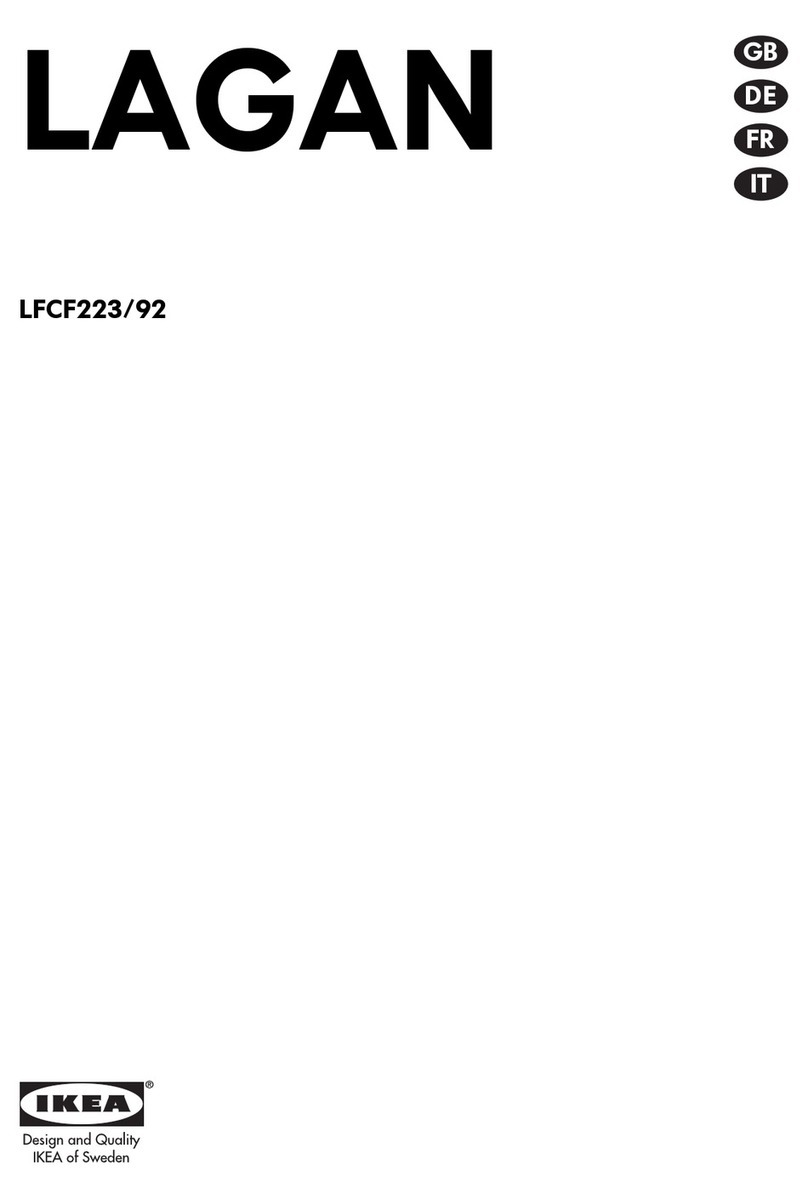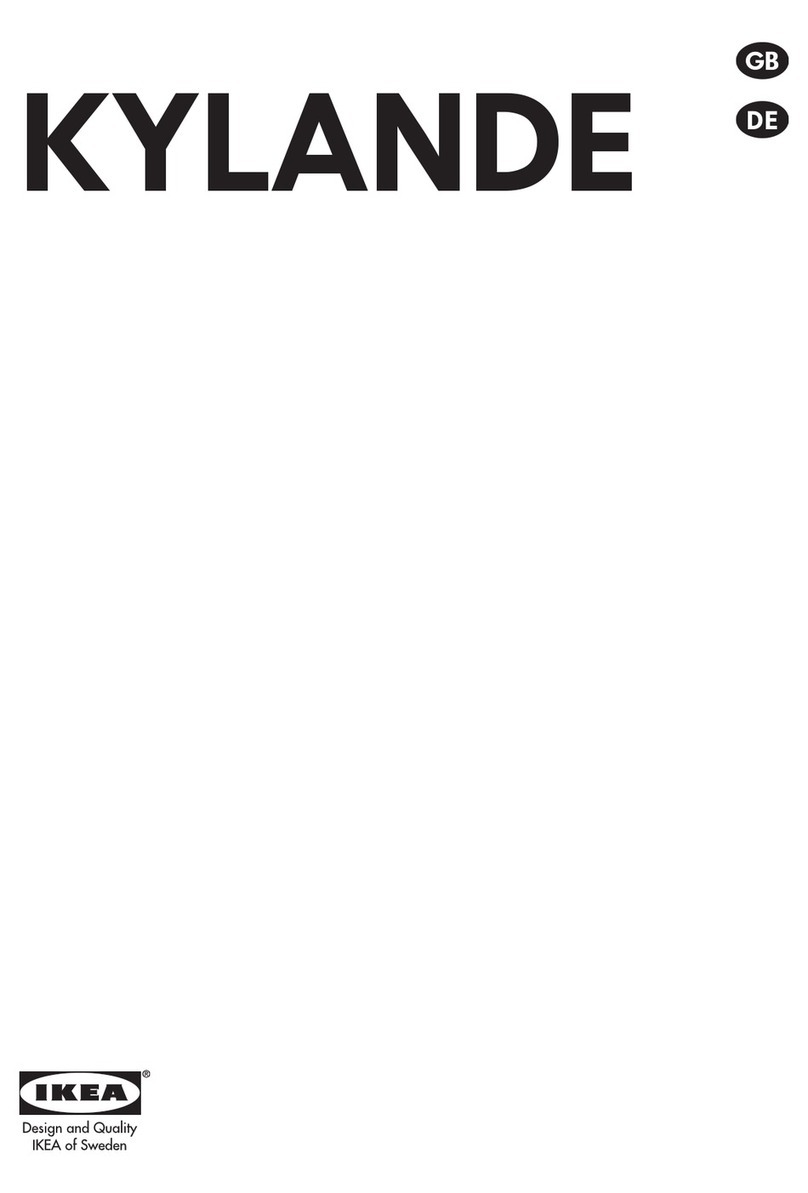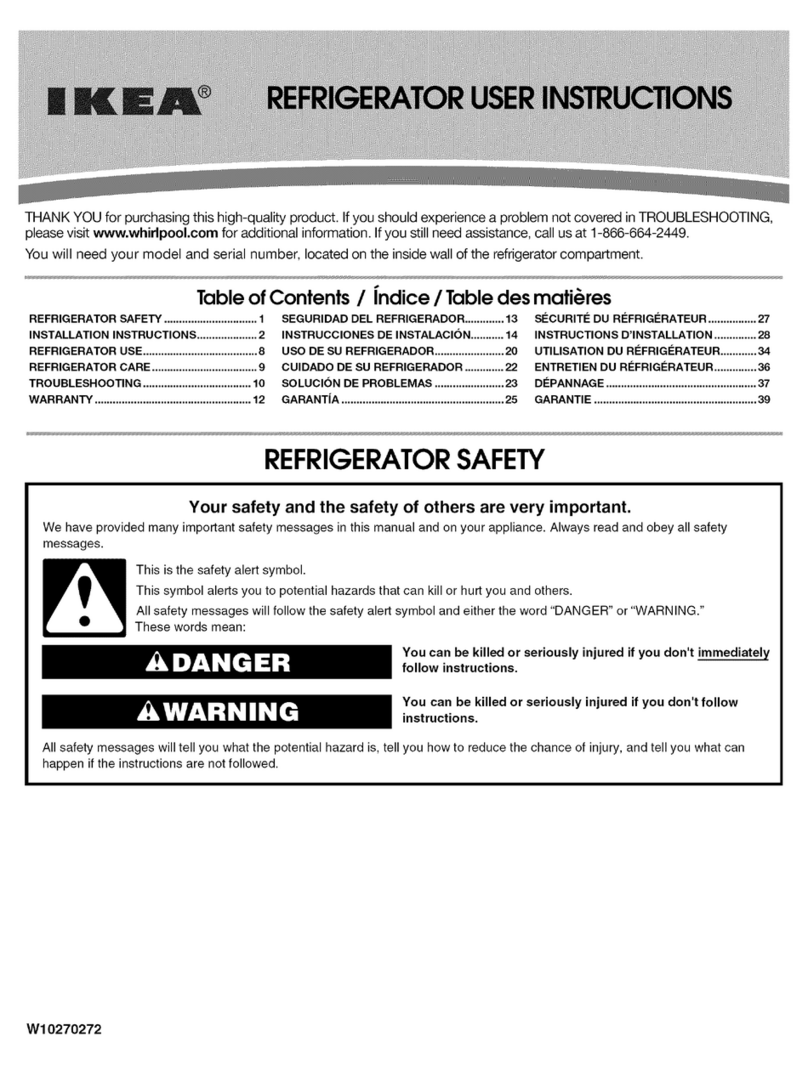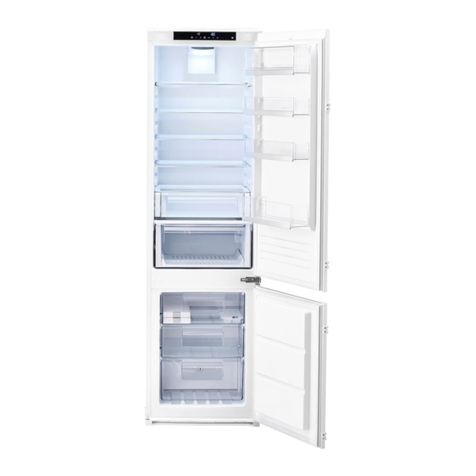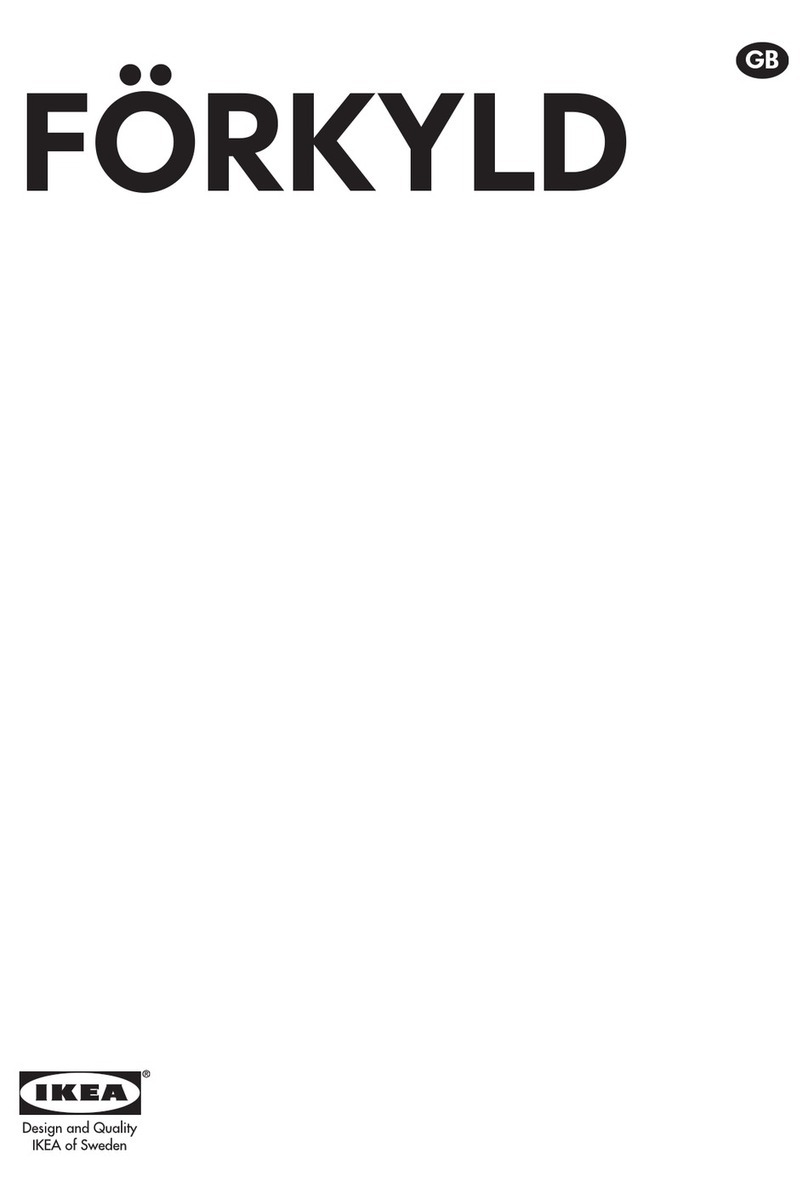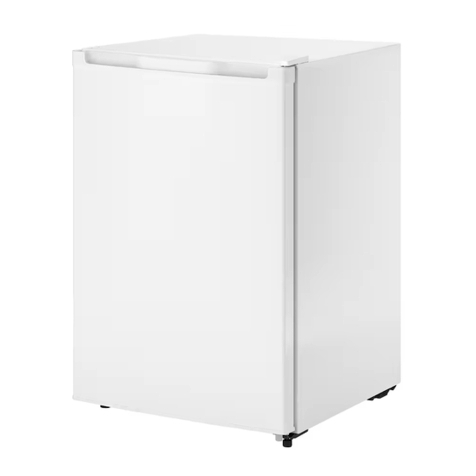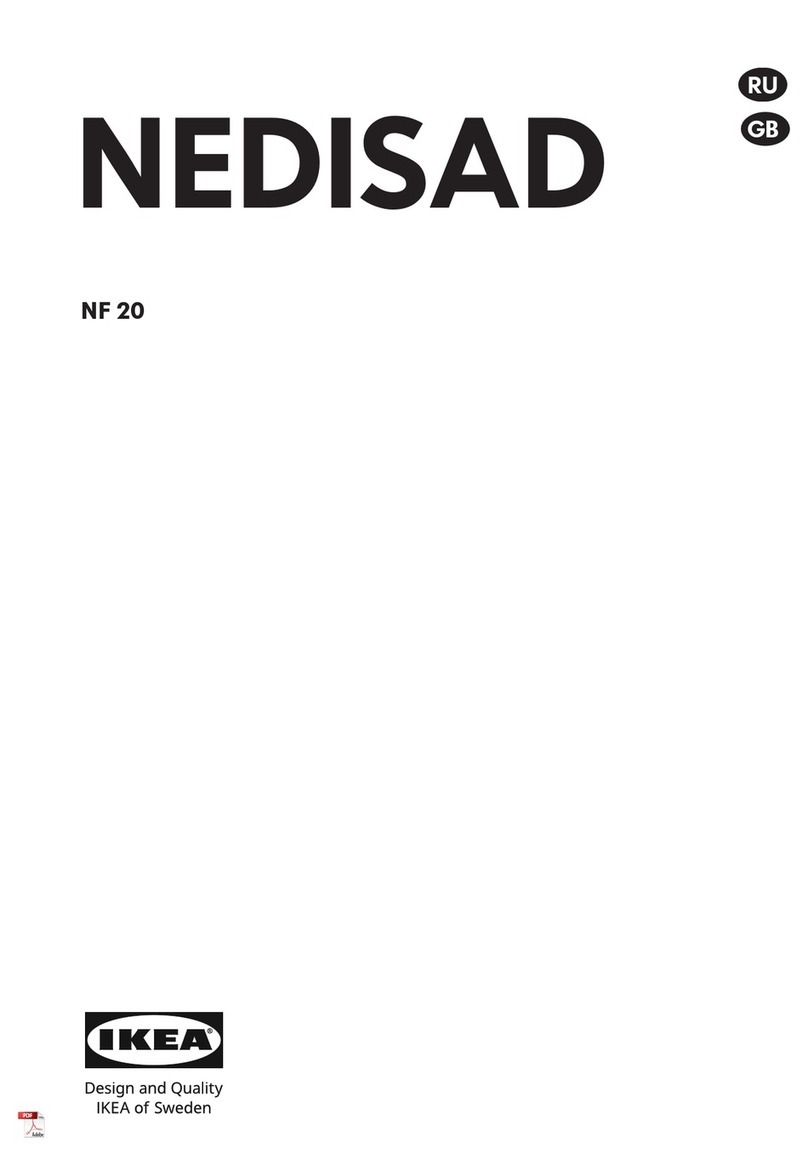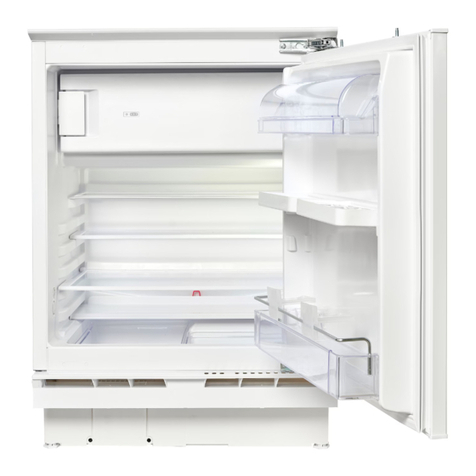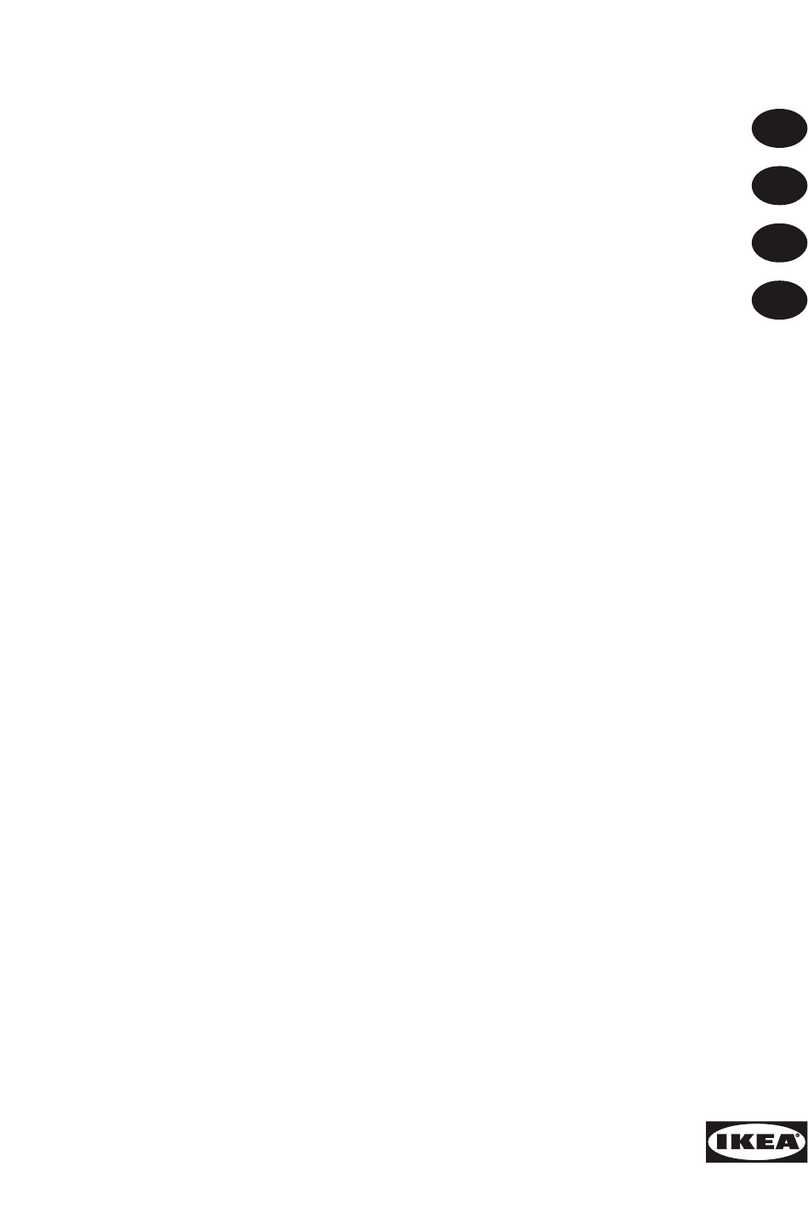ENGLISH 4
Safety information
Before first use
This appliance is intended to be used in household.
To ensure best use of your appliance, carefully read
this User Manual which contains a description of the
product and useful advice.
Keep these instructions for future reference.
1. After unpacking the appliance, make sure it is not
damaged and that the door closes properly.
Any functional fault must be reported to IKEA After
Sales Service as soon as possible.
2. Wait at least two hours before switching the
appliance on, to ensure that the refrigerant circuit
is fully efficient.
3. The electrical installation and the electrical
connection must be carried out by a qualified
technician according to the manufacturer's
instructions and in compliance with the local safety
regulations.
4. Clean the inside of the appliance before using it.
Precautions and general recommendations
Installation and connection
• The appliance must be handled and installed by
two or more persons.
• Be careful not to damage the floors (e.g. parquet)
when moving the appliance.
• During installation, make sure the appliance does
not damage the power cable.
• Make sure the appliance is not near a heat source.
• To guarantee adequate ventilation, leave a
space on both sides and above the appliance
and follow the installation instructions.
• Keep the appliance ventilation openings free.
• Do not damage the appliance refrigerant circuit
pipes.
• Install and level the appliance on a floor strong
enough to take its weight and in a place suitable
for its size and use.
• Install the appliance in a dry and well-ventilated
place. The appliance is arranged for operation in
places where the temperature comes within the
following ranges, according to the climatic class
given on the rating plate. The appliance may not
work properly if it is left for a long time at a
temperature outside the specified range.
• Make sure the voltage specified on the rating
plate corresponds to that of your home.
• Do not use single/multi adapters or extension
cords.
• For the water connection, use the pipe supplied
with the new appliance; do not reuse that of the
previous appliance.
• Power cable modification or replacement must
only be carried out by qualified personnel or by
After-sales Service.
• It must be possible to disconnect the appliance
from the power supply by unplugging it or by
means of a mains two-pole switch installed
upstream of the socket.
Safety
• Do not store explosive substances such as aerosol
cans with a flammable propellant in this
appliance.
• Do not store or use petrol, flammable liquids or
gas in the vicinity of this or other electrical
appliances. The fumes can cause fires or
explosions.
• Do not use mechanical, electric or chemical
means other than those recommended by the
Manufacturer to speed up the defrost process.
• Do not use or place electrical devices inside the
appliance compartments if they are not of the
type expressly authorised by the Manufacturer.
• This appliance is not intended for use by persons
(including children) with reduced physical, sensory
or mental capabilities, or lack of experience and
knowledge, unless they have been given
supervision or instruction concerning use of the
appliance by a person responsible for their safety.
Contents
Safety information 4
Product description 6
Control panel 6
First use 7
Daily use 7
Cleaning and maintenance 7
What to do if… 9
Technical data 10
Environmental concerns 10
IKEA GUARANTEE 11
Climatic Class Amb. T. (°C) Amb. T. (°F)
SN From 10 to 32 From 50 to 90
NFrom 16 to 32 From 61 to 90
ST From 16 to 38 From 61 to 100
TFrom 16 to 43 From 61 to 110

